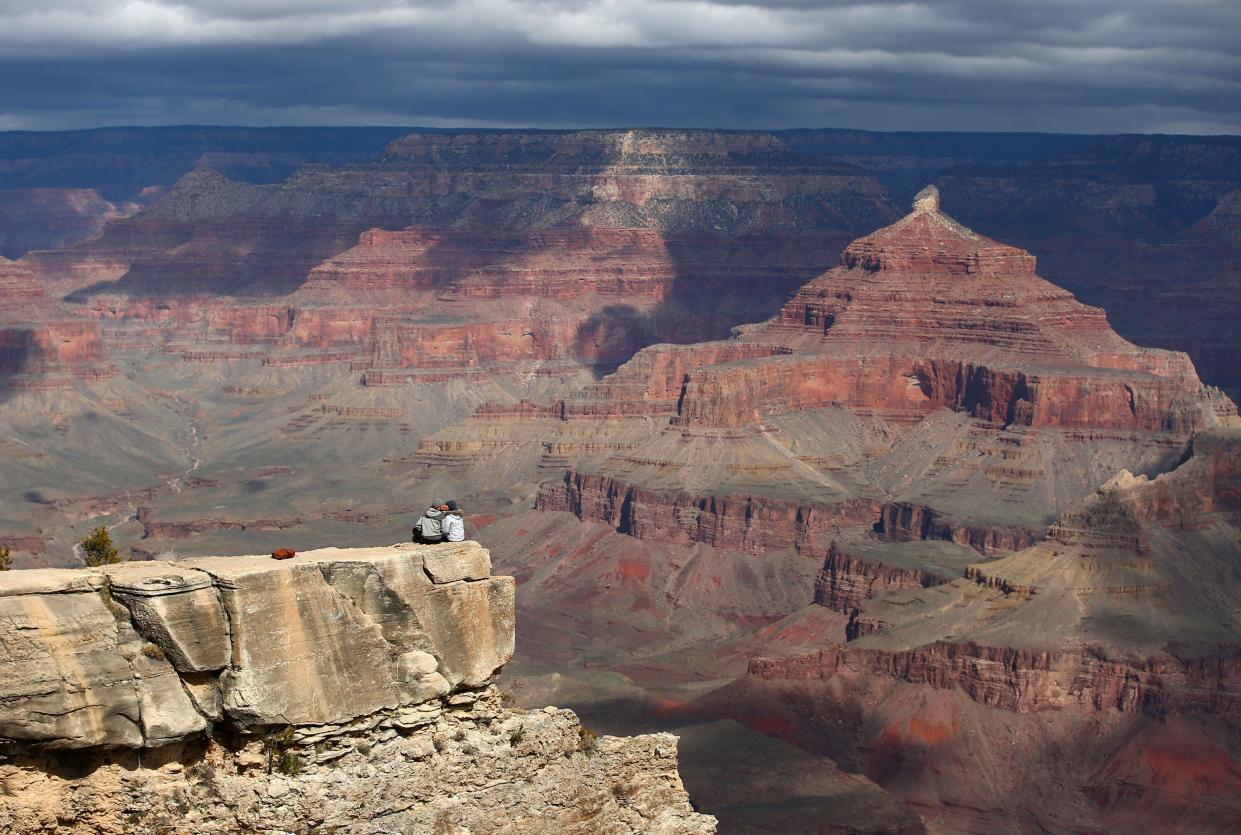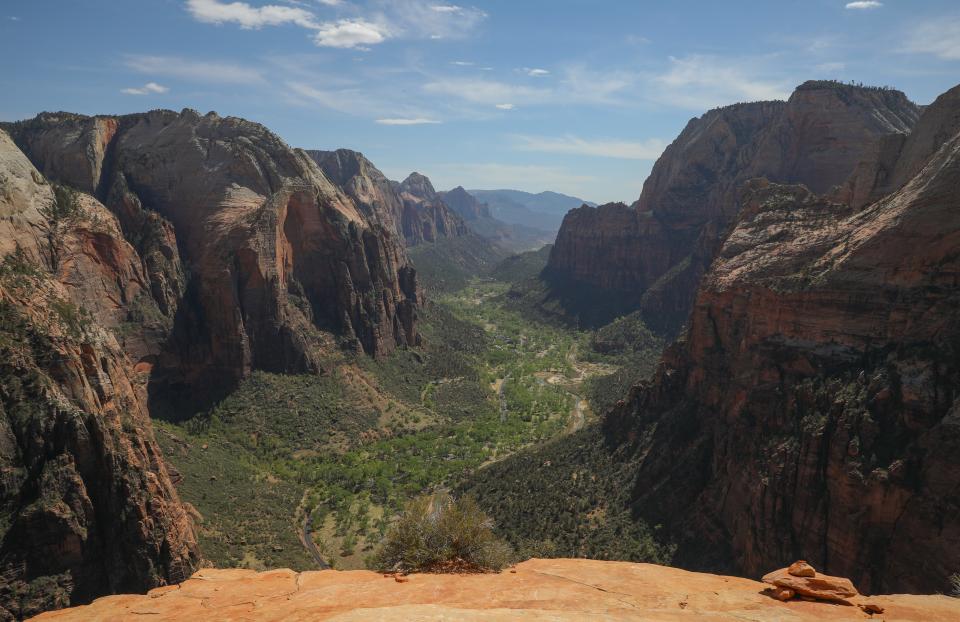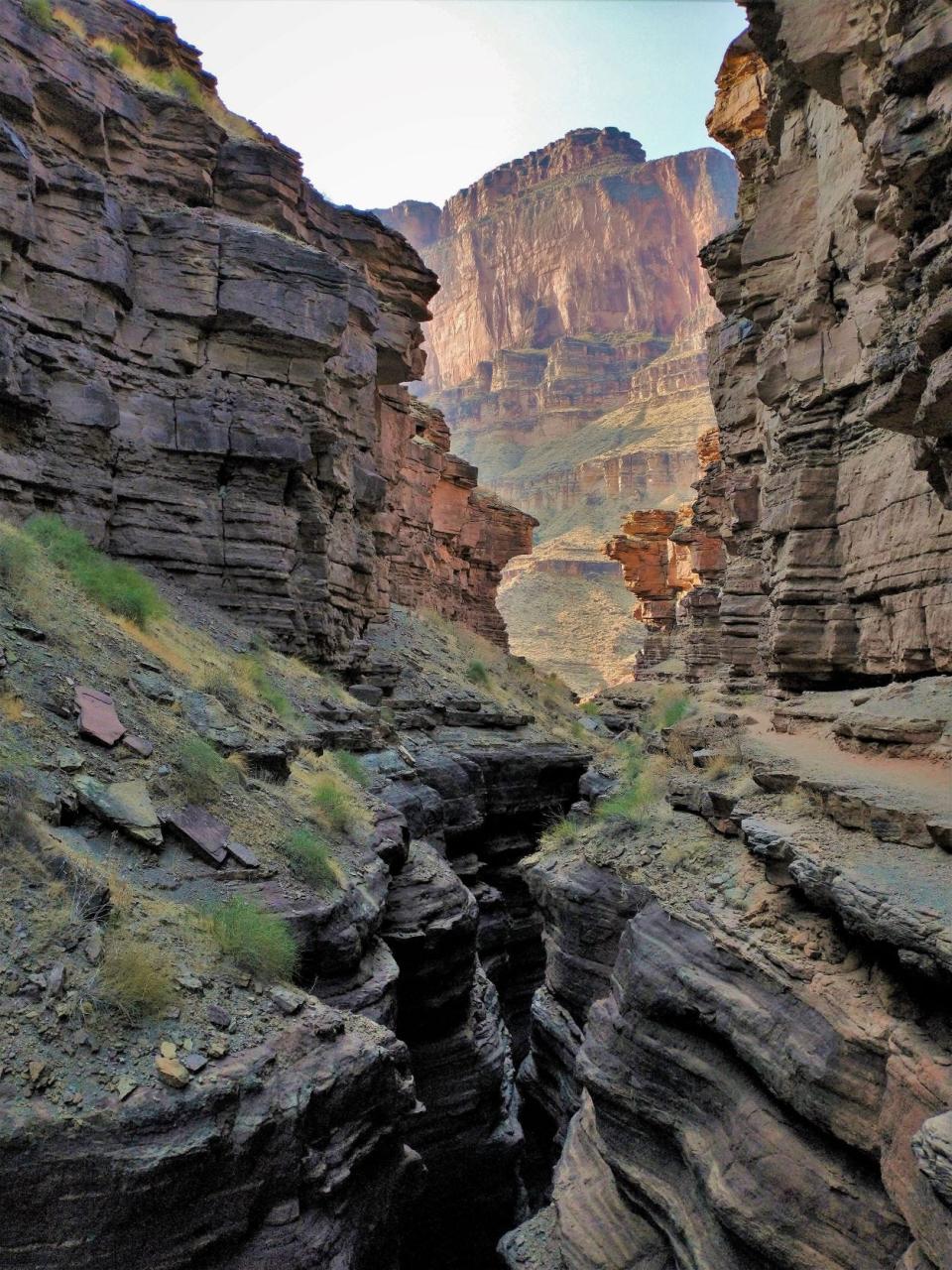New book on climate change in national parks pleads for action to save our best idea

Former park ranger Michael Yochim begins his most recent book, and his last, by invoking the sentiment, first stated in 1983 by environmentalist Wallace Stegner, that "national parks are the best idea we ever had. Absolutely American, absolutely democratic, they reflect us at our best rather than our worst."
Yochim's own idea — to write about how national parks are increasingly afflicted by climate change — came to him around the same time as his 2013 diagnosis with ALS, or amyotrophic lateral sclerosis, an incurable neurodegenerative disease that gradually robs those afflicted of their ability to move, eat, breathe or survive.
"If we don't curtail our carbon emissions soon — and radically curb them," he wrote, "my experience may well become the universal experience."

He cites findings from a 2018 study that, due to their locations in vulnerable Arctic, high-elevation and southwestern desert ecosystems, many national parks are warming much faster than the rest of the country: 1.3 degrees Fahrenheit per century in parks compared to 0.7 degrees nationwide. Having spent his life appreciating these iconic landscapes, Yochim worried what would be left of them even after he was gone.
Across five chapters of "Requiem for America's Best Idea," published in March by the University of New Mexico Press, Yochim describes his worsening symptoms in parallel with lyrical observations of what we stand to lose in five of our most beloved national parks if climate change goes untreated.
Trekking through change
Yochim's intimacy with and affection for America's best idea rises from each of his 296 pages, as visceral as his anguish over the looming end of his adventuring days. It's a wrenching read.
In Chapter One, he notices early symptoms of ALS — muscle spasms and weakness — while hiking with friends in Washington state's Olympic National Park. He hadn't yet been diagnosed, but he had started to worry. Similarly, he wrote, there were 266 glaciers dominating Olympic's stunning landscapes in 1970. Few could know then that in 2009, there would be only 184. And since 2009, melting has reached four times the rate of the eight decades prior.
Climate action in Arizona: The EPA released state-specific emissions reports. Arizona isn't on the list
Seven months into his diagnosis, Yochim spent two weeks rafting through the Grand Canyon with two of his brothers, the story of which he chronicles in Chapter Two. At this point, his disease was affecting his balance and he nearly fell in the river while climbing into the raft. He discussed a 2005 study that used tree-ring data to determine that the period between 1950 and 2000 was the warmest in the Grand Canyon's 1,425-year record, with the related 19% drop in Colorado River flows noticeable on his trip. Projections, he continued, are that the river could lose 55% of its volume by 2100.
Next, Yochim's journey takes him to Montana's Glacier National Park, where he had hoped to mark his final visit with a weeklong-hike but had to settle for scenic drives after a rapid loss of mobility. Still, he said, the park's "Going-to-the-Sun" road offers incredible views while showcasing the region's modern lack of snowpack. The higher average temperatures at fault also threaten pikas, the beloved mouse-like mammals that live on high-elevation rocky slopes and squeak adorable warnings whenever a human comes near.
In the last two chapters, Yochim pilgrimages to two of his and America's favorite parks, Yellowstone and Yosemite. By the time he left Yellowstone, he no longer had the dexterity to drive. Just before he visited Yosemite, he was told he would soon need a wheelchair. Here, Yochim reflects on the toll that wildfires and drought, both exacerbated by climate change, take on these landscapes. Giant sequoia trees, majestic elk, charismatic "picket pins" squirrels and colorful butterflies are succumbing to larger blazes and longer dry spells than were historically part of the natural cycle.
After completing these trips, Yochim wrote much of this book using eye motion technology because he could no longer move other parts of his body. A photo in the book shows him strapped upright into his chair facing his computer. The extraordinary feat seems to make its own case that, with enough motivation and the right tools, daunting tasks like climate mitigation are definitely possible.
The case for saving what we can
Yochim's distress over the fate of the parks, or his own, was not misplaced. In February of 2020, he succumbed to his illness while sitting at his desk. Friends and family completed and readied his book for publication, per his request that maybe national parks could still be saved even if he could not.
"Will our actions reflect us at our best — or at our worst, as it currently appears?"
Climate series: Phoenix isn't what it once was because of climate change. But it's not too late to save it
The book is heavily sourced, with hundreds of end notes and scientific references. By the year 2100, he wrote, scientists predict that average temperatures in U.S. national parks could rise by as much as 9 degrees Celsius if warming is not slowed, a diagnosis that would seal the fate of many species now inhabiting these areas just as much as Yochim's diagnosis sealed his.

It matters, he argued, because parks, in addition to being iconic vacation escapes and some of the last rich reservoirs of biodiversity, are a vital source of human wonder and inspiration. He maintained this is true even for those who cannot physically visit.
"Even if we have never been to the parks, even if we don't have pictures of wilderness areas, wild places inspire and confer peace of mind. Just knowing they exist brings calm."
The case for environmental justice: Climate report draws an arc toward environmental justice, seeking equitable emissions cuts
After bringing readers along for evocative recollections of his traverses across five parks over five chapters, Yochim used his last moments to issue a plea for readers to preserve inspiring wilderness for future generations and fellow creatures, to limit how much we let climate change diminish natural beauty and to honor ourselves by preserving America's best idea.
"Both are stories of urgency: just as I don't have much time left, we don't have much time left to protect the parks from the worst of climate change," he wrote. "Ultimately, both are stories of loss: the one inexplicable and inexorable, the other unnecessary and still preventable."

With the 56th report from the Intergovernmental Panel on Climate Change out just last week, the world's top scientists say the time is right to ramp up action to curb global greenhouse gas emissions, and they've spelled out how. And with the U.S. Department of the Interior sponsoring park appreciation events all next week, the time is also right to go see the national treasures at stake.
On Saturday, America's best idea is free
To encourage visitors to witness everything America's national parks have to offer, and maybe inspire support for their protection, every year in April the National Park Service hosts a National Park Week, with events planned at many of the nation's 63 national parks, 129 national monuments, over 2,600 national historic landmarks and more.
This year's National Park Week kicks off on Saturday with free entry to all sites. The celebration lasts through April 24, with virtual and in-person activities each day.
What can we do to stop climate change: Climate experts say the world 'is at a crossroads,' but offer hope with concrete actions
On Saturday, rangers at Saguaro National Park outside Tucson will lead a 6-mile hike to historic Hope Camp starting from Loma Alta Trailhead at 8 a.m. Paleontologists at Arizona's Petrified Forest National Park east of Flagstaff will showcase how they clean fossils in the park's museum demonstration lab starting at 9 a.m. At 10 a.m., the Tumacácori National Historical Park in the Santa Cruz River Valley south of Tucson will host a cultural demonstration of tortilla making. And at 11 a.m., park rangers at the Grand Canyon will tell those assembled at the south rim's Yavapai Point Amphitheater the region's "unique geologic story preserved in its walls."
More events are scheduled throughout the week at the 22 national park service units located within Arizona.
For those not able to travel but still wanting to take part in National Park Week, the Juan Bautista de Anza National Historic Trail, which extends 1,200 miles from Nogales, Arizona, to the San Francisco Bay area, is hosting a Facebook event where participants can visit their favorite local trail and share their experience by posting a photo on social media with the hashtag #AnzaTrailVirtualFunRun.
This last event may have been most meaningful to Yochim, who used his final months on earth to make a case for the importance of natural areas to disabled people in particular who, though they may never be able to visit, deserve to know that wild things still roam free and undiminished natural beauty still exists. It's up to all those who are able, in any way, to limit climate change in order to protect "our best idea."
Joan Meiners is the Climate News and Storytelling Reporter at The Arizona Republic and azcentral. Before becoming a journalist, she completed a Ph.D. in Ecology. Follow Joan on Twitter at @beecycles or email her at joan.meiners@arizonarepublic.com.
This article originally appeared on Arizona Republic: If national parks inspired you, a new book says it's time to save them

